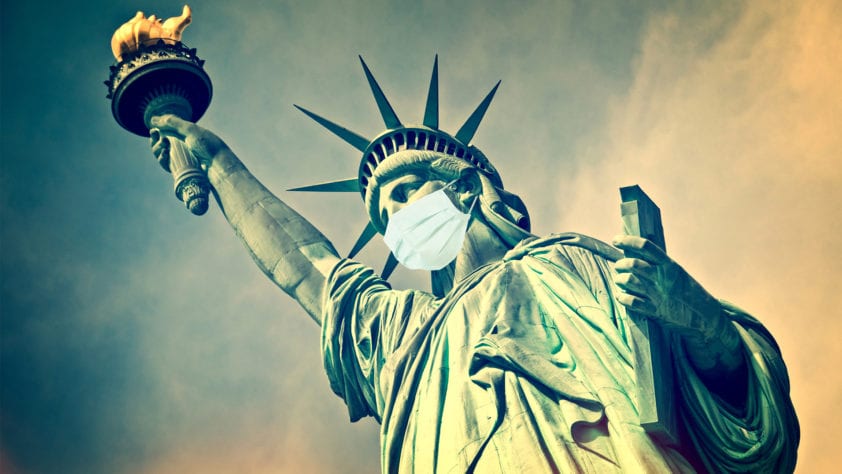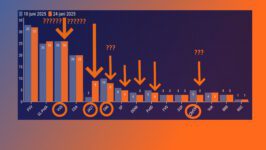Covid-19, the big differences between states in the USA Like in Italy we can see big differences in the spread of the COVID-19 virus between different states in the USA. Looking at the number of deaths per capita, we can see that the province of Rome and Naples has 20 times less deaths than Lombardy […]
Lees volledig artikel: Covid-19, the big differences between states in the USA
Covid-19, the big differences between states in the USA
Like in Italy we can see big differences in the spread of the COVID-19 virus between different states in the USA.
Looking at the number of deaths per capita, we can see that the province of Rome and Naples has 20 times less deaths than Lombardy (standardized based on the starting date of the spread for that province).
In the US we see big differences between states as well. New York also has a death rate 20 times higher than California and Florida. (As I described in this blog)
I have explained in several blogposts that there is a strong correlation between these developments and the weather, especially the specific humidity.
However, the state of Louisiana deviates from that pattern. The huge effect of Mardi Gras, a festival with 1.3 million visitors held on the 25th of February, is described in this post.
Impression
To give a good impression of the difference in the development of the number of deaths between several states I have made an overview of the 13 states experiencing the most deaths (also standardized based on starting date of spread within that state). Together, these states inhabit one third of the American population.
(Illinois’ starting date is around 10 days behind New York’s. Besides, that state has “benefitted” from freezing temperatures, which are bad for spreading the virus).
20 days after the first 10 deaths were registered, these 13 states now seem to have an average of around 15 deaths per 1 million citizens.
(After 25 days New York has 50 deaths per 1 million citizens, and that number is still quickly rising as we speak.)
Slower
Now take 9 states, which together inhabit almost half of the American population, but where the spread is much and much slower. After 20 days these states average only 1,5 deaths per 1 million citizens. After 25 days California now has 3,3 deaths per 1 million citizens, which is only one fifteenth of the deaths in New York for that same period.
Keep in mind when looking at the graph of these 9 states that the Y-axis is 10 (!!) times smaller than that of the previous graph.
That will make even more clear how big the difference is between the two group of states.
R0 slower
It’s clear that the R0, the pace in which the virus spreads, in the 9 states mentioned above is significantly lower than the R0 of the earlier group of 13 states.
Italy shows similar differences in the spread between its northern and southern regions. Actually, basically all countries located below 30 degrees latitude do. Almost all those countries show spreading patterns even much smaller than the group of 9 American states. They all have (just like the 9 states) a very consistent specific humidity of high above the 6 g/kg mark.
For example the Phillipines with 104 million inhabitants. The first COVID-19 case was the end of January. Currently they have 100 deaths., a quarter of the number of deaths in California. And one percent of the number of deaths in New York State.
What do we see: the Philipines had on average 5 times more water in the air in March than in New York. And we see that pattern all over the world.
Precisely because the governors’ and governments’ policies are aimed at decreasing the speed with which virus spreads (and rightly so), it is crucial to realize that local weather conditions will have a huge influence on the spread of the virus.
Weather
Weather forecasts help at making the most suitable policy measures in relation to how fast the spread would be if no measures would be taken at all. Not taking that into account may very well create a situation with disproportioned measures, thus making the cure (much, much) worse than the cause.
Given that the infected and those that interacted with one are placed in quarantine, this means that the 9 states with favorable specific humidity (so half of the American people) could relax their measures and adapt them to the predicted humidity levels.
This way we find a better way to balance the risk of death of a group of people (especially the elderly) and the serious risk we face with regards to the economy and public health in many different areas.
You have just read: Covid-19, the big differences between states in the USA.








